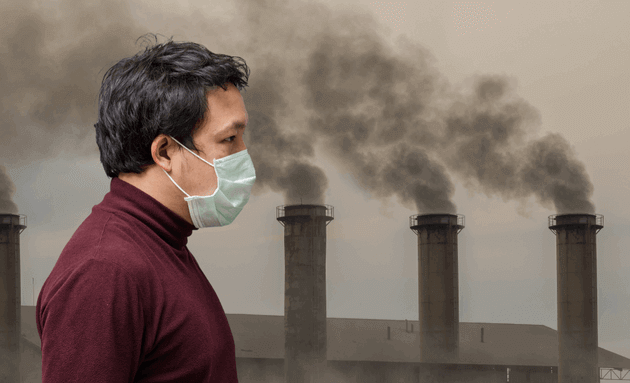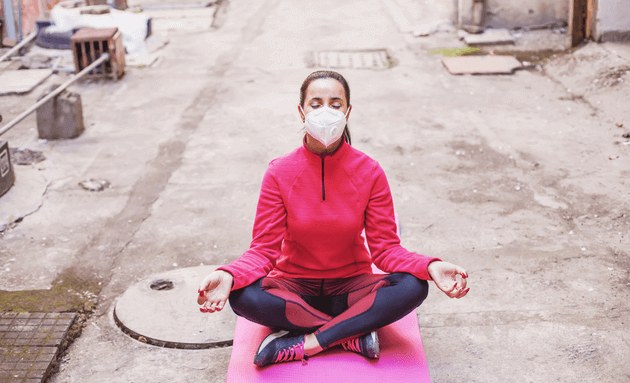India’s air quality is at an all-time low, leaving its citizens grappling with a myriad of increasingly debilitating health issues.
It should come as no surprise that India’s national capital, Delhi, tops the list of most polluted cities in India. Residents of the union territory have witnessed a 13% increase in air pollution levels between 2010 and 2015 (according to satellite data via NASA), with recent studies (conducted by the Indian Institute of Tropical Meteorology)finding a sharp increase in pollution levels in Delhi during holidays like Dussehra.
What Is Causing Rising Air Pollution Levels in Delhi?
In the recent past, Delhi has been enveloped in a layer of Smog (a type of air pollution caused by tiny particles in the air. The word comes from a mixture of the words smoke and fog), recording a ‘Very Poor’ Air Quality Index (AQI) of 301.
The air quality in neighbouring Ghaziabad (320), Greater Noida (312) and Noida (310) in Uttar Pradesh and Haryana's Alipur Khalsa (351) and Panipat (339) also turned "very poor". What is causing this rise in air pollution levels?
Let’s look at the top sources of air pollution in Delhi:
Crop Burning
It is estimated that around 35 million tonnes of crops are set ablaze every year, leading to pollutants and dust particles being lodged into the air. This has become such a major problem that rice stubble burning (especially in the neighbouring states of Haryana and Uttar Pradesh) is now considered to be one of the biggest contributors to air pollution in Delhi.
Vehicular Pollution
The Central Pollution Control Board (CPCB) and the National Environmental Engineering Research Institute (NEERI) have proclaimed vehicular emissions to be a major contributor to increasing levels of air pollution in Delhi.Industrial Pollution

Large-scale constructions, industrial waste and garbage dumps are also major contributors to Delhi’s air pollution levels.Winter Season
Dust particles and pollutants in the air set in due to stagnant winds. They get locked in the air and affect weather conditions, resulting in smog.
Firecrackers

Despite a ban on the sale of firecrackers and the introduction of green crackers, part of the air pollution is caused due to burning of firecrackers during festivals like Dussehra and Diwali.
Common Air Pollutants that Can Affect Your Health
Clean air is made up of a combination of 78% nitrogen, 21% oxygen, and 1% a mixture of other gases. Cities like Delhi, however, have a high amount of dangerous pollutants like:
Particulate Matter: a sum of all solid and liquid particles suspended in the air, many of which are hazardous.
Gaseous air pollutants: like sulfur dioxide, nitrogen dioxide, carbon monoxide (released from burning fuel, gasoline, and natural gas).
Ground-level Ozone: caused due to reactions from nitrogen oxide and vehicular emissions when exposed to sunlight.
How Does Air Pollution Affect Your Health?
People with heart conditions or respiratory illnesses, older people, outdoor workers, children, and pregnant women stand the highest risk of developing air-pollution related health problems if preventive measures are not taken.
Air pollution can also have dire impacts on the health of an otherwise healthy person and lead to health problems like:
Aggravated cardiovascular illnesses
Increased respiratory illnesses (Asthma, Bronchitis)
Added stress on heart and lungs to provide more oxygen
Air Pollution and Reproductive Health
A recent study by Nature Sustainability has established a link between air pollution and ‘silent miscarriages’ in pregnant women.
Missed Abortion in the First Trimester or MAFT occurs when a fetus dies or stops growing, but does not show any physical symptoms. It can happen before the 12 weeks of gestation and women are often unaware that their pregnancy has ended.
The risk of MAFT increases with increased exposure to airborne pollutants like Particulate Matter (PM), Sulfur dioxide, ozone, and carbon monoxide. The pollutants can penetrate the bloodstream of the fetus causing irreversible damage. It can induce alterations in the fetus’ immune system and inhibit metabolic functions, leading to fetal hypoxia or fetal death.
How Can You Stay Safe From Air Pollution?

With rising levels of air pollution in Delhi, it is imperative we follow an action plan to stay safe, while also doing our bit to not contribute to air pollution.
Here are a few measures and steps you can take to make breathing easier in the smog-laden air of Delhi:
Wear Pollution Masks
An ideal pollution mask must have a carbon filter, an exhaust valve, and a filter higher than N95. While buying the mask, ensure it fits perfectly and limit outdoor activities. Here's what you need to know about choosing the right pollution mask for yourself.
Use Air Purifiers
Air purifiers can filter the air and minimise the number of pollutants you breathe in. The better the quality of your air filter, the purer will be your final product.Avoid Exercising Outdoors

High-intensity exercises require us to breathe in deeper the polluted air around us. In a situation like that of Delhi, avoid going out for an early morning or late evening walks – and if you do, don’t forget to put on your pollution mask.Reduce Indoor Air Pollution
Use energy efficiently, try not to dust your floors frequently during winters (dust from the floor rises up, adding to your respiratory discomfort), and segregate your waste. Follow the 3Rs of Reduce, Reuse, and Recycle to do your bit to curb air pollution levels in Delhi.Consult Your Doctor

Get yourself checked if you experience symptoms like:
- Difficulty breathing (especially if you have a respiratory illness)
- Increased heart rate (especially if you have a heart condition)
- Burning eyes
- Headaches and fatigue
Apart from the above mentioned, some other steps you can take are:
- Opting for public transport or carpooling,
- Using more CNG, and
- Keeping your vehicles’ pollution levels in check
Changes need to begin at home, especially when the consequences are dire. As citizens of the country, we should pledge to not only keep the air around us clean and healthy but also do our bit for the greater good of the environment and our future generations.


0 Comments